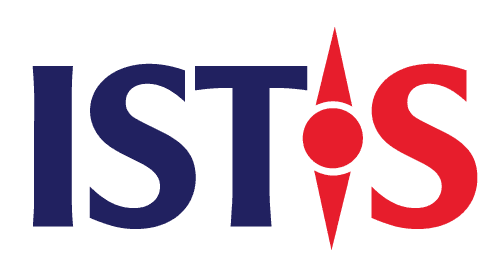The Role of Data in Modern Research Ecosystems
In today’s research landscape, data is no longer a byproduct — it is the bedrock of scientific progress, policy formulation, and technological innovation. From health sciences and climate research to economics and urban planning, data-driven approaches are transforming how knowledge is generated, validated, and applied. As the scale and complexity of datasets grow, so too does the demand for robust platforms that can store, organize, and mobilize that data for deeper insights and cross-disciplinary collaboration.
The increasing digitalization of research has created a paradox: more data is available than ever before, yet much of it remains fragmented, underutilized, or locked within institutional silos. Without an effective system to manage the lifecycle of research data — from collection and curation to analysis and sharing — its potential to inform innovation or public policy is diminished.
This is where research data platforms step in. These systems are not merely digital filing cabinets but foundational infrastructures that support the entire research ecosystem. By enabling researchers, institutions, and policymakers to securely access, analyze, and build upon each other’s work, such platforms are becoming essential for accelerating discovery and reducing redundancy.
In low- and middle-income countries especially, where research capacity may be limited, centralized and open data platforms can act as equalizers — leveling the playing field and opening the door for new partnerships and regional innovation. For example, integrated platforms can help local researchers contribute to global studies, or allow public institutions to evaluate policy outcomes using evidence grounded in real-world, real-time data.
As governments and institutions increasingly embrace digital transformation agendas, the case for strategic investment in research data infrastructure is becoming clearer. The effectiveness of such systems depends not only on technical architecture but also on vision — a recognition that data is not just a resource, but a shared asset to be stewarded in the public interest.
What a Research Data Platform Really Enables
A well-designed research data platform does far more than store datasets. At its core, it enables a new kind of scientific workflow — one that is collaborative, transparent, and scalable. These platforms bridge the gap between raw data and actionable insight by supporting everything from metadata tagging and secure access controls to advanced analytics and machine-readable formats.
First and foremost, research data platforms enhance discoverability. By indexing datasets with clear metadata standards and common taxonomies, they make it easier for researchers across disciplines — and even across languages — to find and reuse data that might otherwise remain hidden in institutional silos. This helps avoid duplication of effort and accelerates new research by building on existing foundations.
Second, they enable collaboration. Whether it’s co-authorship across universities or data sharing between a public agency and a private lab, platforms provide the shared environment where contributors can upload, cite, revise, and validate data in real-time. With built-in version control and licensing tools, contributors can maintain both the integrity and ownership of their work.
Third, research data platforms support reproducibility — a growing concern across scientific disciplines. By providing clear documentation of datasets, methodologies, and revisions, they help ensure that research findings can be verified and built upon. This is particularly valuable for policy-relevant studies, where decisions must be based on reliable and transparent evidence.
Furthermore, these platforms can be designed to support integration with external tools and standards, such as statistical software, APIs, or open government data portals. This allows researchers to automate parts of their analysis pipeline and connect their work to broader data ecosystems.
Importantly, they also serve an educational purpose. For students and early-career researchers, a platform provides exposure to real-world data practices, ethical guidelines, and the culture of open science. It becomes a training ground for the next generation of data-savvy researchers — a vital need in a world where data literacy is foundational.
Policy Alignment Matter
As research becomes increasingly cross-disciplinary and globally connected, interoperability is no longer optional — it’s essential. A research data platform that cannot interact with other systems, standards, and datasets effectively limits its own utility. Interoperability ensures that data can be easily exchanged, understood, and used across various tools, institutions, and borders. And that, in turn, shapes whether a research ecosystem can truly scale.
Policy alignment is the other side of the equation. Even the most technically capable platform can be hamstrung by fragmented data governance, legal restrictions, or conflicting institutional rules. To unlock the full value of research data, platforms must be designed with compliance and alignment in mind — including data privacy laws (such as GDPR), intellectual property norms, and ethical guidelines for data use.
In this context, governments, research institutions, and funding agencies all play a pivotal role. When they coordinate on open data strategies, invest in interoperable infrastructure, and align incentives (e.g., requiring data sharing as a condition for grant funding), they create a virtuous cycle. Researchers are more willing to share data; platforms are more likely to integrate; and innovation flows more freely.
In places like the EU and some ASEAN countries, national science and innovation strategies are beginning to recognize the centrality of interoperability and governance. These policies are not just bureaucratic add-ons — they shape whether a data platform becomes a silo or a springboard for breakthrough research.
Bridging Academia, Government, and Industry Through Shared Data Infrastructure
One of the most promising developments in the evolution of research data platforms is their potential to serve as neutral ground where academia, government, and industry converge. These sectors, while often aligned in interest, have traditionally operated in data silos — each collecting, managing, and analyzing information according to their own protocols and purposes. A well-designed research data platform breaks down these barriers and builds the connective infrastructure needed for collaborative impact.
For universities and research institutes, shared platforms offer access to datasets beyond their institutional walls — enabling richer, more comparative studies. For government agencies, they provide a mechanism to disseminate public data transparently while also tapping into academic analysis and innovation. And for industry players, they open the door to non-proprietary insights that can drive product development, risk analysis, or strategic planning.
What makes this triangle work is mutual benefit. A university researcher gains access to real-time economic or demographic data from government sources. A startup uses open research to build predictive models in climate tech. A ministry leverages academic findings to refine a national innovation policy. The platform becomes a common denominator for trust, exchange, and co-creation.
Successful examples of this include national open science portals, government-backed open data hubs, and cross-sectoral research alliances. In countries like the Netherlands, Singapore, and increasingly Vietnam, we see pilot models where agencies provide raw data, universities contribute curation and interpretation, and private firms co-develop analytical tools — all within a shared governance framework.
Of course, enabling this level of collaboration requires more than technical integration. It demands institutional trust, legal clarity, and often, new forms of partnership agreements. Data ownership, attribution, and licensing must be clearly defined. And platform governance must reflect the diverse interests of its contributors, balancing academic freedom with public accountability and commercial viability.
In essence, shared data infrastructure isn’t just a tool — it’s a structure for reimagining how knowledge is produced, applied, and scaled. When built with intention, these platforms turn fragmented stakeholders into a unified research and innovation engine.
What the Future of Research Data Platforms Could Look Like
The future of research data platforms is not simply about bigger datasets or faster processing — it’s about building smarter, more inclusive, and action-oriented systems that reflect the evolving landscape of global knowledge. As scientific questions grow more complex and interconnected, the platforms that support inquiry must also evolve, embracing flexibility, interoperability, and strategic foresight.
One key direction is modularity. Future platforms will likely offer customizable environments where researchers and institutions can plug in specific tools, APIs, or workflows based on their needs — whether it’s for real-time climate modeling, biomedical simulations, or policy impact assessments. This moves beyond static repositories to dynamic “research workbenches,” allowing users to interact with data, models, and collaborators in one ecosystem.
AI integration will also define the next generation. From automated data tagging and literature synthesis to machine-assisted hypothesis generation, artificial intelligence will help researchers manage the scale and complexity of modern knowledge. It won’t replace scientists — but it will amplify their ability to find patterns, simulate outcomes, and test ideas more efficiently.
At the same time, user experience (UX) will become a top priority. As more non-academic actors — such as NGOs, journalists, startups, and civil servants — engage with research data, platforms must become more intuitive, multilingual, and mobile-accessible. Dashboards, visualizations, and narrative summaries will help bridge technical insights with public understanding.
Equally important is ethical governance. As research data becomes more interconnected and valuable, questions of privacy, consent, and equity will grow. Future platforms must bake in safeguards from the start — not just comply with standards like GDPR or local data sovereignty laws, but also ensure inclusive representation in how data is collected, labeled, and interpreted.
Finally, the global outlook of platforms will expand. Climate, health, migration, and technology trends don’t stop at borders. Platforms that support transnational data sharing, multilingual access, and interoperable standards will be key in tackling the grand challenges of our time.
In short, the future research data platform is not just a database — it’s an engine for collective intelligence. It links institutions, empowers users, and shapes the very way knowledge translates into action.





